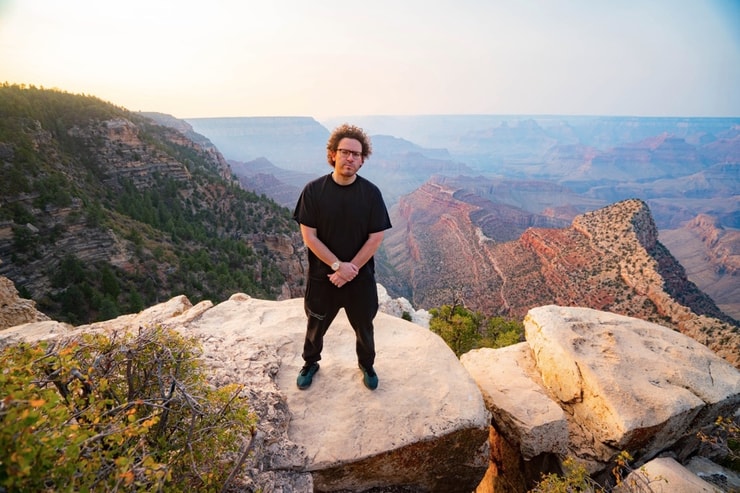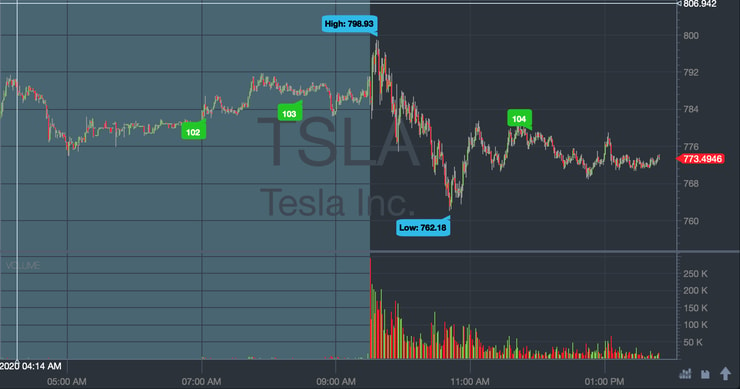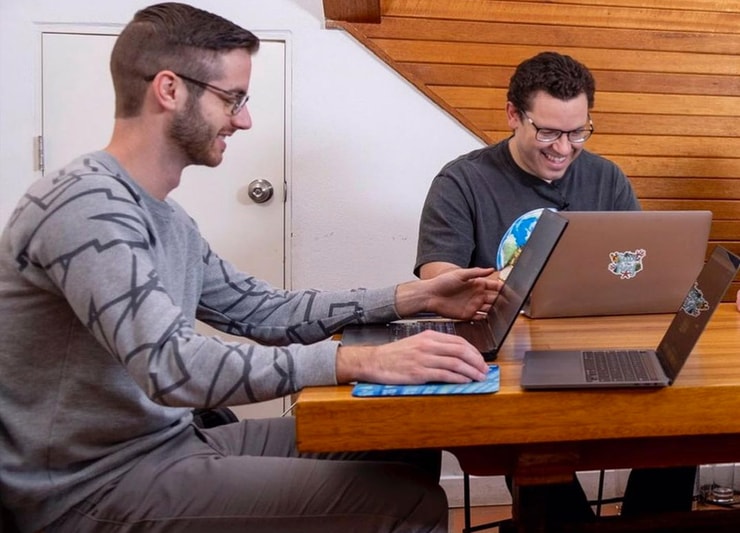Did you catch the latest crazy Elon Musk tweet? Turns out President Donald Trump isn’t the only one who can move the market with a single tweet.
Last week, Tesla Inc. (NASDAQ: TSLA) CEO Elon Musk posted a now-infamous tweet. He said he thought the stock for his company was priced too high…
… and traders went crazy.
Unlike most of the crazy volatility in the market lately, this pandemonium had nothing to do with the pandemic. Still, it was unprecedented. Nobody had ever seen a CEO talk about their company’s stock like this.
The reaction was swift and powerful: Tesla’s stock price started to coast downhill faster than a speeding Model S.
It just goes to show that social media — and social conduct — can have a huge impact on a stock’s price.
Let’s look at what happened with the Elon Musk tweet and what lessons smart traders can learn from this crazy Tesla crash.
Table of Contents
What Happened With Tesla?

On Friday, Elon Musk tweeted in no uncertain terms that he thought Tesla stock was too high. Check out the tweet here.
Don’t know who this guy is? He’s not just the CEO of Tesla. He’s also the company’s co-creator … and its biggest shareholder.
He has every reason to be this stock’s biggest cheerleader.
This wasn’t a leaked conversation. It wasn’t something someone overheard him saying. He posted this publicly on Twitter — to over 33 million followers.
The world took notice fast … confusion abounded. Musk is definitely not your average CEO, but this just seemed crazy. It had people wondering…
Was he hacked? Is he insane? Or is he drunk or high? Is he just being blunt?
I even put out a Twitter poll on the topic and got thousands of responses. Check out the results:
WOW, so $TSLA stock is now down $50/share since his tweet saying the stock was too high, let's see what you guys think
— Timothy Sykes (@timothysykes) May 1, 2020
The market’s reaction was fast and furious. Before the tweet, TSLA was trading at around $760.
Shares fell $40 … $50 … $80 … The day’s low was in the $680s. More than 10% down.

In a matter of hours, the company lost billions of dollars. All because of a tweet.
So, why’d he do it?
Some say the Elon Musk tweet was a response to detractors who say he just wanted the stock price to go higher … So in Musk’s mind, this response could be an indication that he’s NOT trying to drive up the stock price. And by being honest, he may be vying for respect as a thought leader.
Yeah, he missed the mark. He might want to be a thought leader, but he really didn’t think about the consequences of his actions. Let’s get to the real question…
What Trading Opportunities Did the Tesla Crash Create?
Two in particular: short selling and dip buying.
I was on top of it. Shortly after the tweet, I alerted it in the Trading Challenge chat room:
11:25 AM timothysykes: “If we get a statement soon that Elon Musk’s Twitter was hacked, $TSLA should surge so potential dip buy for me, be ready for any followup news”
11:26 AM timothysykes: “Gotta think like a trader, every breaking news has some potential trade, I have no position yet, just watching, for all we know he wasn’t hacked and is just truly insane”
No, I didn’t trade TSLA after the tweet. But this is a good lesson on why it’s SO important to keep up with news like this. You gotta learn how quickly catalysts like this can move stocks.
An Awesome Moment for Short Sellers
In the current market, short sellers are like cockroaches — and we have an infestation problem.
I don’t short much anymore. There are just way too many short squeezes and idiots out there.
Last week I shorted Co-Diagnostics Inc (NASDAQ: CODX) … But not because I’m an idiot who tries to short everything that’s up. When a news report revealed that the company had ties to boiler rooms, I saw an opportunity — and made a $570 profit.*
LOL the profit on my first short on a stock with links to boiler rooms in many months brings me to +$12k on the week and +$104k in 2020 trading with a puny account size, screw longterm investing in this market, trading RULES! #ilovemyjob #singlesaddup #studyhard
— Timothy Sykes (@timothysykes) April 30, 2020
Tesla has plenty of detractors and wannabe short sellers. In the past, the haters have mostly been burned. In fact, earlier this year, TSLA spiked nearly 60% — costing short sellers $8 billion. It was trading like a penny stock!
I’ve gotta admit … this recent tweet was like a gift to short sellers.
If you got in on time, it was a great short. The stock went from the $760s to about $680 in a matter of hours. Even though I hate options, there were some great opportunities there, too.
However, you had to act fast … Not everyone profited. As my student and Profit.ly user Androo shares:
“After Tim alerted Elon’s tweets, I waited a bit and I shorted Tesla too late a few times into weakness at $700 and covered in the $709s on average. Wasn’t really my setup and I went too big on it so I lost $9k on that one. If I was quicker I would’ve done much better!”
But he learned from his mistakes and reacted fast. Androo continues:
“I cut losses quickly. I even had a small position o/n around $700 and exited p/m for small gain because it wasn’t doing what I wanted. If I didn’t exit quickly I would’ve gotten squeezed thru $740. The meat of the move was Friday from $750 to $700.”
That’s why my students are the best … If you can learn from your mistakes, it’s not entirely a loss.
Dip Buying
Another way to approach the crazy Tesla volatility? Dip buying.
It makes sense … After all, the company is generally strong. It has a history of rebounding from bad PR. Like when Musk smoked pot on the Joe Rogan Experience and the share price plummeted … Outrage culture is real, and it can move stocks.
If you’d bought at the low on Friday, you’d probably be feeling pretty good right now. As of this writing, TSLA is trading for over $770.

But I didn’t dip buy Tesla — or short it. Here’s why…
Elon Musk’s Tweet: To Trade or Not to Trade?
Why didn’t I trade this infamous tweet?
Too many unknowns.
This was an unprecedented tweet during an unprecedented market. I’m a glorified history teacher — I like to look for patterns that repeat over and over.
This was a totally new thing. I was hesitant to short because, at first, I was scared he’d been hacked. Shares could have popped right back up if he’d said that was the case.
And I didn’t want to dip buy because I didn’t know where the low would be. The market was down on that day. There could be lawsuits … Yeah, it dropped about 10%, but it could have gone even lower. I don’t like to hold and hope.
So instead of chasing TSLA, I stuck with trades that fit my go-to patterns. Touchpoint Group Holdings Inc. (OTCMKTS: TGHI) was a big percent gainer that was already up 400%.
This was a pattern I know and was prepared for — and I had several wins with it, with a $3,825 profit and a $1,620 profit, both within a few hours.*
(*Please note: my results are not typical. I’ve spent years developing exceptional skills and knowledge. Always remember trading is risky. Never risk more than you can afford.)
Lessons From the Elon Musk Tweet

The major moves following the Tesla share price tweet are over for now. But let’s unpack why the reaction was so severe…
Social Media Can Create Serious Moves in the Market
Elon’s tweet wasn’t modest or self-deprecating. I think it was insane.
He was putting his entire livelihood on the line — and that of all of his employees. It was also disrespectful to investors. It’s like a punch in the gut to people who believe in his company.
There’s no CEO who’s ever said that. They’re practically programmed to be positive about their stock at all times.
This is why I say that as a trader you shouldn’t fall in love with companies. And you’ve gotta be aware of how much sway emotions and sentiment can have on the market.
This tweet is the perfect example of the fact that actions have consequences … Social media, news items, and even the personal conduct of moguls can move stocks in big ways.
History Repeats Itself
Musk’s had some tweeting problems in the past. He’s even gone to court for it.
It doesn’t seem like he’s learned his lesson. But you can learn a lesson from his conduct. When a leader like Musk posts something outrageous on Twitter or other social media, it has the power to create major volatility for a stock.
We’re in a crazy volatile market, but events like this happen all the time. And they can create short-lived spikes. If you want to be prepared for the next time something like this happens, check out my FREE two-hour video lesson, “The Volatility Survival Guide.”
I recently created this guide to help traders learn to make the most of the coronavirus market volatility — but it’s appropriate for any market volatility. Will you be ready the next time something like this happens?
Stick to Your Setups
It might have been tempting to get in on the Tesla action. But when it comes down to it, if you want to be a smart trader, it’s better to stick with setups you know and really get.
Even though there were opportunities, I didn’t trade TSLA. There were just too many plays that did fit my ideal setups … I’d rather stick with those than take unnecessary risk.
One of my top students, Kyle Williams, stayed away too. His reason? “If you saw him tweet early enough to get short then that would’ve been sweet … but it was too out of my strategy to personally take advantage of it in time.”
Is he feeling the FOMO? Nope. He’s sticking to what works for him, and it shows in his results — he reports making $26,500 in April.*
[*Note that these results aren’t typical. My students and I put in the time and dedication and have exceptional skills and knowledge. Most traders lose money. Always remember trading is risky … never risk more than you can afford.]
Trading Challenge
Wanna be prepared for market volatility like this? You’ve gotta get educated.
My Trading Challenge is based on my 20+ years of trading experience. It’s designed to help traders learn the rules and process and become smart, self-sufficient traders.
I share everything I’ve learned — good and bad. From my personal rules for success to the brokers I use to every single trade … I share it all.
I don’t want loser students. If you just want hot stock picks — move on. I want students who want it, and who are willing to work for it.
There are plenty of resources — like 6,300 video lessons and an incredible chat room community. Are you ready to take the next step in your trading career?
The Final Word on the Elon Musk Tweet
Elon Musk’s recent tweet proves that rich people aren’t perfect. A lot of people are probably pretty angry at him right now!
But if Musk’s tweet teaches us anything, it’s the power of media — social and otherwise — to move stocks. The public reaction to news can be swift. So as a trader, it’s your job to study how the market reacts and be prepared for the next big event like this.
Are you ready to study and be prepared? Apply for my Challenge!
What do you think of Elon Musk’s tweet? If you traded TSLA after it, did you go long or short?







Leave a reply